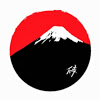-
Posts
118 -
Joined
-
Last visited
-
Days Won
1
general_piffle last won the day on June 3 2018
general_piffle had the most liked content!
Hi Joel, I’ve just picked up this reply , on my Yari . I see your London based , I’m just north of Birmingham. I’m on Facebook .if you would like to see the Yari , I’m up for that , any new information is always welcome. Brendan .

general_piffle replied to Jon's topic in Nihonto

